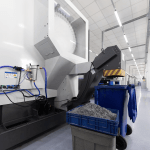
It’s an obvious truism that creativity is the source of innovation which is in turn the source of business success.
Not surprisingly, most companies try to make their employees more creative, usually through brainstorming, collaboration and open plan offices that encourage social interaction. Unfortunately, these make people less creative.
Take brainstorming, for instance. According to research published recently in Applied Cognitive Psychology, individuals working alone are more likely to come up with creative ideas than groups working together.
Collaboration, same thing. A recent article in the Harvard Business Review cited a study of 300 organizations revealed that in most cases, as much as a third of the value-added collaborations come from only 3% to 5% of the employees. Similarly, a study at the University of Iowa showed that the most effective teams have an “extra-miler” who ends up doing most of the work.
As for open plan offices, they are so full of noise pollution and visual pollution, and create so many interruptions that creative thinking becomes almost impossible. This is because social interaction is the opposite of creativity.
Turns out that people are most likely to think of new ideas when their minds are wandering, according to research conducted at The University of York and the University of California Santa Barbara, (Classic example: having a great idea whilst in the shower.)
To be consistently creative, you need cognitive variety, says Emma Seppälä, Science Director at Stanford University’s Center for Compassion and Altruism Research and Education, writing in Quartz:
“The idea is to balance linear thinking–which requires intense focus–with creative thinking, which is borne out of idleness. Switching between the two modes seems to be the optimal way to do good, inventive work.”
In her book The Happiness Track, Seppälä cites Nikola Tesla (who invented the key technology behind alternating current while taking a nature walk), Friedrich Augst Kukule (who figured out the structure of benzene while daydreaming) and Albert Einstein (who wrestled with complex mathematical problems by listening to Mozart.)
Unfortunately, today’s busy workplace doesn’t leave much time for letting your mind wander. However, you can put your mind into a more creative space simply by doing something mindless, like playing a computer game or even aimlessly walking around.
Thus, if managers and executives truly want employees to be more creative, they should stop trying to force the issue and instead learn to tolerate, and even encourage, employees to spend more of their workday simply goofing off.





